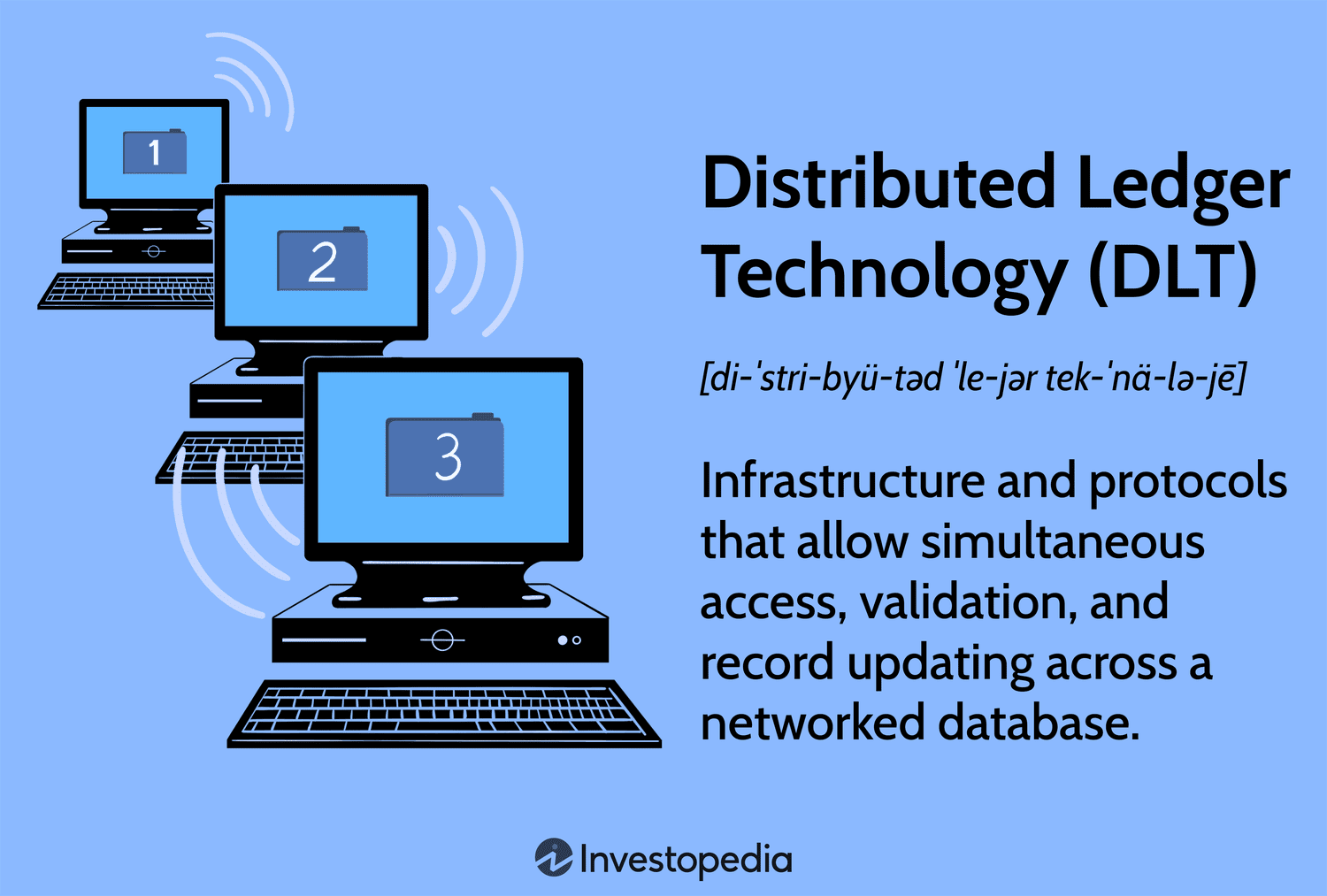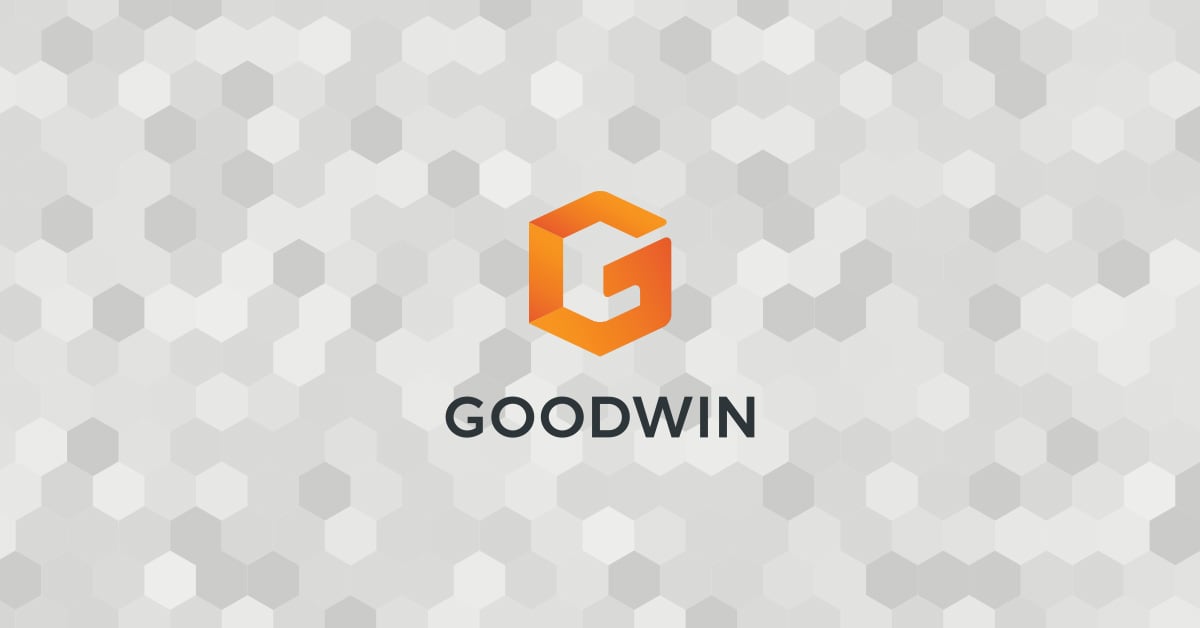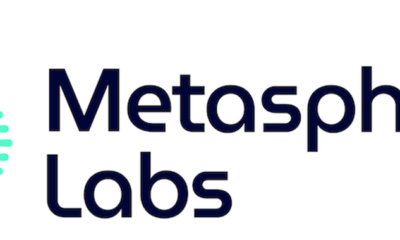News
Definition and How It Works

What Is Distributed Ledger Technology (DLT)?
Distributed ledger technology (DLT) is the technological infrastructure and protocols that allow simultaneous access, validation, and record updating across a networked database. DLT is the technology blockchains are created from, and the infrastructure allows users to view any changes and who made them, reduces the need to audit data, ensures data is reliable, and only provides access to those that need it.
Key Takeaways
- Distributed ledgers are maintained by a network of nodes, each of which has a copy of the ledger, validates the information, and helps reach a consensus about its accuracy.
- Distributed ledgers have been around for decades but have become more well-known, researched, used, and developed since Bitcoin was introduced.
- Distributed ledgers can be used in nearly every industry where data is collected and used.
- All blockchains are distributed ledgers, but not all distributed ledgers are blockchains.
- Though DLT enhances accountability, security, and accessibility, it is still complex and difficult to scale.
History of Distributed Ledgers
Distributed computing is not new—businesses and governments have been using the concept for several decades. In the 1990s, it became possible for multiple computers and users in different locations to solve problems and return the solutions to a central location.
Advances in data science, computing, software, hardware, and other technologies have made ledgers much more capable. Improved connectivity through intranet and internet protocols allowed for much more data to be collected, analyzed, and used. However, because there can now be many users with access to data, it is necessary to have someone verify the changes.
Computer and data scientists developed programs that reduced the need for auditing data. These programs used automation and data encryption techniques to verify database transactions or changes in a database’s state. This is called consensus—the act of automated majority agreement on transaction validity, where a transaction is simply a change made to a database’s state.
Distributed ledgers evolved into scalable and programmable platforms, as seen in Ethereum and HyperLedger, where solutions can be created to use a database, or ledger, for everything from tokenizing physical assets to streamlining manufacturing and other business processes.
How Distributed Ledger Technology Works
DLTs allow information to be stored securely and accurately using cryptography. The data can be accessed using “keys” and cryptographic signatures. Once the information is stored, it can become an immutable database; the rules of the network, written into the coding of the database programming, govern the ledger.
If something is immutable, it is unable to be changed. Distributed ledgers are only immutable if they are programmed to be that way. Blockchains are immutable because they are decentralized and cryptographically enhanced public ledgers.
Because they are decentralized, private, and encrypted, distributed ledgers are less prone to cybercrime, as all the copies stored across the network need to be attacked simultaneously for the attack to be successful. Additionally, the peer-to-peer sharing and updating of records make the whole process much faster, more effective, and cheaper.
Every device on a distributed ledger network stores a copy of the ledger. These devices are called nodes—a network can have any number of nodes. Any changes to the ledger, such as moving data from one block to another, are recorded across all nodes. Because each node has a copy of the ledger, each one publishes its version with the latest transactions.
If the network reaches a consensus about the validity of the latest ledger, the transactions are finalized, encrypted, and used as a basis for the following transactions. This is how blockchains develop—each block contains encrypted information about the proceeding block, which makes them impossible to change.
Industries Using Distributed Ledger Technology
Distributed ledgers are created for many different purposes, but one of the most used ways is as a platform for others to scale and use. One of the more well-known distributed ledgers is Hyperledger Fabric. It is a modular and scalable DLT platform several businesses have used to create solutions that span many industries. Some industries that have implemented DLT solutions include aviation, education, healthcare, insurance, manufacturing, transportation, and utilities.
Supply chains can benefit greatly from DLT. Many factors make them inefficient, inaccurate, and susceptible to corruption or losses. Fujitsu, a global data and information technology company, has designed distributed ledger technology to enhance supply chain transparency and fraud prevention by securing and tracking data.
Fujitsu’s Rice Exchange was created to trade rice, ensuring data regarding sources, prices, insurance, shipping, and settlement are recorded on the ledger. Anyone involved can look at any data and find accurate information regarding the entire process because it cannot be changed. All data is entered and secured automatically by the platform—it will eventually provide tracking information for rice shipping containers as it is shipped to its final destination.
Uses of Distributed Ledger Technology
Aside from specific industries, there are also specific situations where DLT solutions have proven to add value. Some examples of specific DLT uses include:
- Record transactions: DLT enables secure, transparent, and decentralized transactions without the need for a central authority. As DLT is a ledger, it records inputs and outputs. Though this naturally lends itself to financial records, DLT can record any type of transaction, not just financially based ones.
- Secure identities: DLT can be used to create a secure and tamper-proof digital identity for individuals, as the technology can provide a reliable way to verify identities and prevent identity theft.
- Collect votes: DLT can be used to create a secure and transparent voting system that can prevent voter fraud and ensure the integrity of the voting process. As mentioned above, as transactions (financial or non-financial) are recorded, a transparent, immutable, open ledger of interactions with users is saved. This enhances the equity and believability of a collection of opinions.
- Enter contracts: DLT allows for smart contracts, agreements that automatically execute or complete based on prevailing conditions. For example, an insurance claim may automatically release funds once the claim has been processed. This limits error and DLTs make it more difficult for precarious activity by bad actors.
- Demonstrate ownership: DLT can be used to record property transactions, creating a tamper-proof and transparent record of ownership and transfer of property. Though there are some limitations on translating real-world ownership of physical assets to a distributed ledger, the ledger may be able to convey an unchangeable source of truth regarding ownership.
DLT may also be referred to as a shared ledger as it requires a ledger to be shared across a peer-to-peer computer network.
Advantages and Disadvantages of Distributed Ledger Technology
Pros of DLT
DLT holds many benefits over more traditional centralized ledger systems. Because DLT is a decentralized system, there is no central point of control or failure. This makes DLT more resilient to attacks and less vulnerable to system-wide failures. Also, because DLT uses cryptographic algorithms to secure data, it is nearly impossible to tamper with or forge records. This enhances the trustworthiness of the data and reduces the risk of fraud.
DLT allows for transparent access to data and transactions, allowing all users greater visibility into the operations of the system. This may lead to greater buy-in from users due to transparency and accountability of records.
DLT can streamline processes by removing intermediaries and automating transactions through smart contracts. Because smart contracts may automatically execute when contract conditions are met, there may be less need for human interaction or administration. This can reduce costs and increase efficiency.
Last, DLT can enable greater financial inclusion. Some people may not have access to traditional banking services. As DLT often relies only on an internet connection, individuals who would be otherwise limited may have access to a greater range of services. This extends to the use of different platforms and networks via interoperability.
Cons of DLT
Due to DLT’s infancy, there are still considerable downsides to the technology. DLT is still complex and difficult to implement and maintain. Leveraging the solution often requires specialized knowledge and expertise, especially to implement.
DLT can struggle with scalability as the number of participants and transactions increases. As a result, DLT processes may lead to slower processing capabilities or higher use costs. In addition, some DLTs such as Bitcoin require a significant amount of energy to maintain the network and process transactions. This can have negative environmental impacts.
As seen by the actions of bad actors, the lack of regulation and standardization in the blockchain industry (blockchains are derived from DLT) can lead to risk for users and investors. By extension, DLT requires widespread adoption to be effective, and many industries and organizations may be hesitant to adopt new technologies due to these security concerns.
Distributed ledgers might be immutable, but this benefit also comes with a significant downside—if mistakes are made, they cannot be changed unless there are users with permission to do so. In a public DLT like the Bitcoin blockchain, this can be problematic. For instance, if a user typed an erroneous address in their wallet and sent the wrong person some Bitcoin, they cannot reverse the transaction.
Pros
-
Spreads systematic risk around, minimizing the risk of a single point of failure
-
Has greater security due to cryptographic algorithms
-
Allows for transparency and visibility into operations
-
May prove to be more efficient due to smart contract automation
-
Offers individuals with limited access to traditional systems potentially greater capabilities
Cons
-
Is more complex compared to traditional ledger solutions
-
Can require higher energy consumption for operation
-
May have difficult scaling as more users/transactions occur
-
Some applications remain risky due to lack of regulation
-
May prove to be difficult to reverse fraudulent or erroneous activity
Why Distribute Ledger Technology Is Important
DLT is important because it has the potential to transform how information is recorded, stored, and distributed. The importance is often cited across three pillars: security, transparency, and accessibility.
Security
Traditional ledger technology often has a central point of control, with one single entity often in charge of the ledger. DLT makes the ledger more resilient to attacks and less vulnerable to system-wide failures. As DLT uses cryptographic algorithms to secure data, it also makes it more difficult to tamper with or forge records.
Consider a traditional banking system where a banker is the central point in ensuring your transaction is recorded correctly. In contrast, consider a DLT solution built on a consensus mechanism where all distributed ledgers must be in agreement about how a transaction is recorded. This validation of transactions allows greater trust among users and removes the power an individual might have to alter data.
Transparency
Centralized, traditional ledgers often restrict access to specific individuals. Though this still holds value for sensitive information, there are many use cases where it is more beneficial for all when data and information are broadly distributed and transparent. Consider the example above of voting; having digitally distributed, undisputable, verifiable records of voting may enhance the believability of results.
DLT is also important as it holds the theory of reducing fraud and increasing accountability in the long term. Note how all transactions within a DLT system are able to be viewed by anyone with access to the DLT. The information may be “audited” by anyone at any time, potentially demotivating bad actors from entering into nefarious activity in such a public sphere.
Accessibility
Last, DLT may eventually be critically important to developing and emerging countries or regions where centralized technologies are limited. Think about the banking limitations of different countries around the world. DLT boasts the ability to store and record transactions using only a network connection as opposed to a very niche (and expensive) connection, such as a bank account at a specific bank.
As DLT is a relatively new technology that is still being explored and developed, this presents opportunities for innovation and the creation of new applications and use cases. In general, because of the ease of being to access DLT solutions, there are many positive implications on the broad public being able to communally access a shared network with often fewer bureaucratic hurdles to meet prior to access.
Distributed Ledger Technology Consensus Mechanisms
A central facet of DLT is how transactions are “approved” when consensus needs to be reached among a disparate user base. Without a universally-agreed system of how items are accepted within the DLT, users of the DLT would be unable to universally agree on how items to include and what items should be excluded.
This process of reviewing transactions is called a consensus mechanism, and a DLT may leverage any of the following processes. Note that consensus mechanisms are constantly evolving, and only several of the more common approaches are listed below:
- Proof of Work (PoW): In PoW, miners compete to solve cryptographic puzzles to validate transactions and create new blocks. This type of consensus mechanism requires computational power, making it a less environmentally friendly method. The concept behind PoW is that miners must financially invest and commit resources to approve transactions, so they are incentivized to be “good actors.”
- Proof of Stake (PoS): In PoS, validators hold a stake in the network and are chosen to validate transactions based on the amount of the stake they hold. Seen as a more environmentally friendly option, it is very expensive to become a full validator and earn rewards.
- Delegated Proof of Stake (DPoS): DPoS is a variant of proof of stake where the network selects a limited number of validators to validate transactions. This variation reduces the computational resources required to secure the network. In many ways, a DPoS system is seen as a more democratic means of selecting approvers and, in some instances, might offer better scalability.
Distributed Ledgers vs. Blockchain
There are several key factors that distinguish blockchain from distributed ledgers. In general, blockchain is a specific type of DLT. DLTs may take various forms, while a blockchain uses one specific infrastructure that uses a linear system of blocks to record and verify information.
Blockchains often leverage a proof of work or proof of stake consensus mechanism, whereas a DLT has a much broader range of mechanisms available. In addition, DLTs are often more broadly used across industries as they can be leveraged for broader problems. Blockchain has historically been most associated with the financial sector as a means of recording a payment system. The security behind either may also vary, with blockchain having a very defined set of criteria within the DLT realm.
Blockchain
-
Data is stored in chained files called “blocks”
-
Always encrypted
-
Generally public and permissionless, but some are permissioned
-
Always immutable
What Is Another Word For Distributed Ledger?
You might hear a distributed ledger called a share ledger.
Are DLT and Blockchain the Same?
All blockchains are distributed ledgers (DLs), but the opposite is not true—blockchains are derived from DLs.
What Is the Difference Between a Distibuted Ledger and a Centralized Ledger?
A centralized ledger is a database stored in a centralized location. It could be hosted by an individual, group, or organization that maintains it. A distributed ledger is a database where a copy is distributed, shared, and automatically synchronized.
What Is Meaning of DLT?
Distributed ledger technology is the concept of using modern networking systems, hardware, and programming to distribute copies of a database to multiple nodes that synchronize it to maintain it.
The Bottom Line
Distributed ledger technology uses databases stored on separate, connected devices in a network to ensure data accuracy and security. Blockchains evolved from distributed ledgers to address growing concerns that too many third parties are involved in too many transactions.
Distributed ledger technology is becoming necessary in modern businesses and enterprises that need to ensure accuracy in financial reporting, manage supply chains, prevent fraud, and identify inefficiencies. It has many more use cases in time-consuming and costly business activities.
News
Terra Can’t Catch a Break as Blockchain Gets $6 Million Exploited

The attack, which exploited a vulnerability disclosed in April, drained around 60 million ASTRO tokens, sending the price plummeting.
The Terra blockchain has been exploited for over $6 million, forcing developers to take a momentary break the chain.
Beosin Cyber Security Company reported that the protocol lost 60 million ASTRO tokens, 3.5 million USDC, 500,000 USDT, and 2.7 BTC or $180,000.
Terra developers paused the chain on Wednesday morning to apply an emergency patch that would address the attack. Moments later, a 67% majority of validators upgraded their nodes and resumed block production.
The ASTRO token has plunged as much as 75%. It is now trading at $0.03, a 25% decline on the day. Traders who took advantage of the drop are now on 195%.
The vulnerability that took down the Cosmos-based blockchain was disclosed in April and involved the deployment of a malicious CosmWasm contract. It opened the door to attacks via what is called an “ibc-hooks callback timeout reentrancy vulnerability,” which is used to invoke contracts and enable cross-chain swaps.
Terra 2.0 also suffered a massive drop in total value locked (TVL) in April, shortly after the vulnerability was discovered. It plunged 80% to $6 million from $30 million in TVL and has since lost nearly half of that value, currently sitting at $3.9 million.
The current Earth chain emerged from the rubble as a hard fork after the original blockchain, now called Terra Classic, collapsed in 2022. Terra collapsed after its algorithmic stablecoin (UST) lost its peg, causing a run on deposits. More than $50 billion of UST’s market cap was wiped out in a matter of days.
Terraform Labs, the company behind the blockchain, has been slowly unravelling its legal woes since its mid-2022 crash. Founder Do Kwon awaits sentencing in Montenegro after he and his company were found liable for $40 billion in customer funds in early April.
On June 12, Terraform Labs settled with the SEC for $4.4 billion, for which the company will pay about $3.59 billion plus interest and a $420 million penalty. Meanwhile, Kwon will pay $204.3 million, including $110 million in restitution, interest and an $80 million penalty, a court filing showed.
News
Google and Coinbase Veterans Raise $5M to Build Icebreaker, Blockchain’s Answer to LinkedIn

Icebreaker: Think LinkedIn but on a Blockchain—announced Wednesday that it has secured $5 million in seed funding. CoinFund led the round, with participation from Accomplice, Anagram, and Legion Capital, among others.
The company, which is valued at $21 million, aims to become the world’s first open-source network for professional connections. Its co-founders, Dan Stone and Jack Dillé, come from Google AND Monetary base; Stone was a product manager at the cryptocurrency giant and also the co-creator of Google’s largest multi-identity measurement and marketing platform, while Dillé was a design manager for Google Working area.

The pair founded Icebreaker on the shared belief that the imprint of one’s digital identity (and reputation) should not be owned by a single entity, but rather publicly owned and accessible to all. Frustrated that platforms like LinkedIn To limit how we leverage our connections, Dillé told Fortune he hopes to remove paywalls and credits, which “force us to pay just to browse our network.” Using blockchain technology, Icebreaker lets users transfer their existing professional profile and network into a single, verified channel.
“Imagine clicking the login button and then seeing your entire network on LinkedIn, ChirpingFarcaster and email? Imagine how many introductions could be routed more effectively if you could see the full picture of how you’re connected to someone,” Stone told Fortune.
Users can instantly prove their credentials and provide verifiable endorsements for people in their network. The idea is to create an “open graph of reputation and identity,” according to the founders. They hope to challenge LinkedIn’s closed network that “secures data,” freeing users to search for candidates and opportunities wherever they are online. By building on-chain, the founders note, they will create a public ledger of shared context and trust.
Verified channels are now launched for
Chirping
Online Guide
Wallet
Discord
Telephone
TeleporterYou can find them in Account -> Linked Accounts Italian: https://t.co/mRDyuWW8O2
— Icebreaker (@icebreaker_xyz) April 3, 2024
“Digital networking is increasingly saturated with noise and AI-driven fake personas,” the founders said in a statement. For example: Dillé’s LinkedIn headline reads “CEO of Google,” a small piece of digital performance art to draw attention to unverifiable information on Web2 social networks that can leave both candidates and recruiters vulnerable to false claims.
“Icebreaker was created to enable professionals to seamlessly tap into their existing profiles and networks to surface exceptional people and opportunities, using recent advances in cryptographically verifiable identity,” the company said, adding that the new funding will go towards expanding its team and developing products.
“One of the next significant use cases for cryptocurrency is the development of fundamental social graphs for applications to leverage… We are proud to support Dan, Jack and their team in their mission to bring true professional identity ownership to everyone online,” said CoinFund CIO Alex Felix in a statement.
Learn more about all things cryptocurrency with short, easy-to-read flashcards. Click here to Fortune’s Crash Course in Cryptocurrency.
Fuente
News
Luxembourg proposes updates to blockchain laws | Insights and resources

On July 24, 2024, the Ministry of Finance proposed Blockchain Bill IVwhich will provide greater flexibility and legal certainty for issuers using Distributed Ledger Technology (DLT). The bill will update three of Luxembourg’s financial laws, the Law of 6 April 2013 on dematerialised securitiesTHE Law of 5 April 1993 on the financial sector and the Law of 23 December 1998 establishing a financial sector supervisory commissionThis bill includes the additional option of a supervisory agent role and the inclusion of equity securities in dematerialized form.
DLT and Luxembourg
DLT is increasingly used in the financial and fund management sector in Luxembourg, offering numerous benefits and transforming various aspects of the industry.
Here are some examples:
- Digital Bonds: Luxembourg has seen multiple digital bond issuances via DLT. For example, the European Investment Bank has issued bonds that are registered, transferred and stored via DLT processes. These bonds are governed by Luxembourg law and registered on proprietary DLT platforms.
- Fund Administration: DLT can streamline fund administration processes, offering new opportunities and efficiencies for intermediaries, and can do the following:
- Automate capital calls and distributions using smart contracts,
- Simplify audits and ensure reporting accuracy through transparent and immutable transaction records.
- Warranty Management: Luxembourg-based DLT platforms allow clients to swap ownership of baskets of securities between different collateral pools at precise times.
- Tokenization: DLT is used to tokenize various assets, including real estate and luxury goods, by representing them in a tokenized and fractionalized format on the blockchain. This process can improve the liquidity and accessibility of traditionally illiquid assets.
- Tokenization of investment funds: DLT is being explored for the tokenization of investment funds, which can streamline the supply chain, reduce costs, and enable faster transactions. DLT can automate various elements of the supply chain, reducing the need for reconciliations between entities such as custodians, administrators, and investment managers.
- Issuance, settlement and payment platforms:Market participants are developing trusted networks using DLT technology to serve as a single source of shared truth among participants in financial instrument investment ecosystems.
- Legal framework: Luxembourg has adapted its legal framework to accommodate DLT, recognising the validity and enforceability of DLT-based financial instruments. This includes the following:
- Allow the use of DLT for the issuance of dematerialized securities,
- Recognize DLT for the circulation of securities,
- Enabling financial collateral arrangements on DLT financial instruments.
- Regulatory compliance: DLT can improve transparency in fund share ownership and regulatory compliance, providing fund managers with new opportunities for liquidity management and operational efficiency.
- Financial inclusion: By leveraging DLT, Luxembourg aims to promote greater financial inclusion and participation, potentially creating a more diverse and resilient financial system.
- Governance and ethics:The implementation of DLT can promote higher standards of governance and ethics, contributing to a more sustainable and responsible financial sector.
Luxembourg’s approach to DLT in finance and fund management is characterised by a principle of technology neutrality, recognising that innovative processes and technologies can contribute to improving financial services. This is exemplified by its commitment to creating a compatible legal and regulatory framework.
Short story
Luxembourg has already enacted three major blockchain-related laws, often referred to as Blockchain I, II and III.
Blockchain Law I (2019): This law, passed on March 1, 2019, was one of the first in the EU to recognize blockchain as equivalent to traditional transactions. It allowed the use of DLT for account registration, transfer, and materialization of securities.
Blockchain Law II (2021): Enacted on 22 January 2021, this law strengthened the Luxembourg legal framework on dematerialised securities. It recognised the possibility of using secure electronic registration mechanisms to issue such securities and expanded access for all credit institutions and investment firms.
Blockchain Act III (2023): Also known as Bill 8055, this is the most recent law in the blockchain field and was passed on March 14, 2023. This law has integrated the Luxembourg DLT framework in the following way:
- Update of the Act of 5 August 2005 on provisions relating to financial collateral to enable the use of electronic DLT as collateral on financial instruments registered in securities accounts,
- Implementation of EU Regulation 2022/858 on a pilot scheme for DLT-based market infrastructures (DLT Pilot Regulation),
- Redefining the notion of financial instruments in Law of 5 April 1993 on the financial sector and the Law of 30 May 2018 on financial instruments markets to align with the corresponding European regulations, including MiFID.
The Blockchain III Act strengthened the collateral rules for digital assets and aimed to increase legal certainty by allowing securities accounts on DLT to be pledged, while maintaining the efficient system of the 2005 Act on Financial Collateral Arrangements.
With the Blockchain IV bill, Luxembourg will build on the foundations laid by previous Blockchain laws and aims to consolidate Luxembourg’s position as a leading hub for financial innovation in Europe.
Blockchain Bill IV
The key provisions of the Blockchain IV bill include the following:
- Expanded scope: The bill expands the Luxembourg DLT legal framework to include equity securities in addition to debt securities. This expansion will allow the fund industry and transfer agents to use DLT to manage registers of shares and units, as well as to process fund shares.
- New role of the control agent: The bill introduces the role of a control agent as an alternative to the central account custodian for the issuance of dematerialised securities via DLT. This control agent can be an EU investment firm or a credit institution chosen by the issuer. This new role does not replace the current central account custodian, but, like all other roles, it must be notified to the Commission de Surveillance du Secteur Financier (CSSF), which is designated as the competent supervisory authority. The notification must be submitted two months after the control agent starts its activities.
- Responsibilities of the control agent: The control agent will manage the securities issuance account, verify the consistency between the securities issued and those registered on the DLT network, and supervise the chain of custody of the securities at the account holder and investor level.
- Simplified payment processesThe bill allows issuers to meet payment obligations under securities (such as interest, dividends or repayments) as soon as they have paid the relevant amounts to the paying agent, settlement agent or central account custodian.
- Simplified issuance and reconciliationThe bill simplifies the process of issuing, holding and reconciling dematerialized securities through DLT, eliminating the need for a central custodian to have a second level of custody and allowing securities to be credited directly to the accounts of investors or their delegates.
- Smart Contract Integration:The new processes can be executed using smart contracts with the assistance of the control agent, potentially increasing efficiency and reducing intermediation.
These changes are expected to bring several benefits to the Luxembourg financial sector, including:
- Fund Operations: Greater efficiency and reduced costs by leveraging DLT for the issuance and transfer of fund shares.
- Financial transactions: Greater transparency and security.
- Transparency of the regulatory environment: Increased attractiveness and competitiveness of the Luxembourg financial centre through greater legal clarity and flexibility for issuers and investors using DLT.
- Smart Contracts: Potential for automation of contractual terms, reduction of intermediaries and improvement of transaction traceability through smart contracts.
Blockchain Bill IV is part of Luxembourg’s ongoing strategy to develop a strong digital ecosystem as part of its economy and maintain its status as a leading hub for financial innovation. Luxembourg is positioning itself at the forefront of Europe’s growing digital financial landscape by constantly updating its regulatory framework.
Local regulations, such as Luxembourg law, complement European regulations by providing a more specific legal framework, adapted to local specificities. These local laws, together with European initiatives, aim to improve both the use and the security of projects involving new technologies. They help establish clear standards and promote consumer trust, while promoting innovation and ensuring better protection against potential risks associated with these emerging technologies. Check out our latest posts on these topics and, for more information on this law, blockchain technology and the tokenization mechanism, do not hesitate to contact us.
We are available to discuss any project related to digital finance, cryptocurrencies and disruptive technologies.
This informational piece, which may be considered advertising under the ethics rules of some jurisdictions, is provided with the understanding that it does not constitute the rendering of legal or other professional advice by Goodwin or its attorneys. Past results do not guarantee a similar outcome.
News
New bill pushes Department of Veterans Affairs to examine how blockchain can improve its work

The Department of Veterans Affairs would have to evaluate how blockchain technology could be used to improve benefits and services offered to veterans, according to a legislative proposal introduced Tuesday.
The bill, sponsored by Rep. Nancy Mace, R-S.C., would direct the VA to “conduct a comprehensive study of the feasibility, potential benefits, and risks associated with using distributed ledger technology in various programs and services.”
Distributed ledger technology, including blockchain, is used to protect and track information by storing data across multiple computers and keeping a record of its use.
According to the text of the legislation, which Mace’s office shared exclusively with Nextgov/FCW ahead of its publication, blockchain “could significantly improve benefits allocation, insurance program management, and recordkeeping within the Department of Veterans Affairs.”
“We need to bring the federal government into the 21st century,” Mace said in a statement. “This bill will open the door to research on improving outdated systems that fail our veterans because we owe it to them to use every tool at our disposal to improve their lives.”
Within one year of the law taking effect, the Department of Veterans Affairs will be required to submit a report to the House and Senate Veterans Affairs committees detailing its findings, as well as the benefits and risks identified in using the technology.
The mandatory review is expected to include information on how the department’s use of blockchain could improve the way benefits decisions are administered, improve the management and security of veterans’ personal data, streamline the insurance claims process, and “increase transparency and accountability in service delivery.”
The Department of Veterans Affairs has been studying the potential benefits of using distributed ledger technology, with the department emission a request for information in November 2021 seeking input from contractors on how blockchain could be leveraged, in part, to streamline its supply chains and “secure data sharing between institutions.”
The VA’s National Institute of Artificial Intelligence has also valued the use of blockchain, with three of the use cases tested during the 2021 AI tech sprint focused on examining its capabilities.
Mace previously introduced a May bill that would direct Customs and Border Protection to create a public blockchain platform to store and share data collected at U.S. borders.
Lawmakers also proposed additional measures that would push the Department of Veterans Affairs to consider adopting other modernized technologies to improve veteran services.
Rep. David Valadao, R-Calif., introduced legislation in June that would have directed the department to report to lawmakers on how it plans to expand the use of “certain automation tools” to process veterans’ claims. The House of Representatives Subcommittee on Disability Assistance and Memorial Affairs gave a favorable hearing on the congressman’s bill during a Markup of July 23.
-

 Videos10 months ago
Videos10 months agoCrypto News: Bitcoin, ETH Price, CPI Print, PYTH, WIF & MORE!!
-

 Videos9 months ago
Videos9 months agoCrypto News: Bitcoin Price, ETF, ETH, WIF, HNT & MORE!!
-

 DeFi9 months ago
DeFi9 months agoMetasphere Labs announces follow-up event regarding
-

 Videos10 months ago
Videos10 months agoSolana price potential?! Check out THIS update if you own SOL!!
-

 Videos9 months ago
Videos9 months agoWho Really CONTROLS THE MARKETS!! Her plans REVEALED!!
-

 DeFi6 months ago
DeFi6 months agoPump.Fun Overtakes Ethereum in Daily Revenue: A New Leader in DeFi
-

 DeFi6 months ago
DeFi6 months agoDegens Can Now Create Memecoins From Tweets
-

 News6 months ago
News6 months agoNew bill pushes Department of Veterans Affairs to examine how blockchain can improve its work
-

 News6 months ago
News6 months agoLawmakers, regulators to study impact of blockchain and cryptocurrency in Alabama • Alabama Reflector
-

 Bitcoin6 months ago
Bitcoin6 months ago1 Top Cryptocurrency That Could Surge Over 4,300%, According to This Wall Street Firm
-

 Ethereum9 months ago
Ethereum9 months agoComment deux frères auraient dérobé 25 millions de dollars lors d’un braquage d’Ethereum de 12 secondes • The Register
-

 Videos9 months ago
Videos9 months agoCryptocurrency News: BTC Rally, ETH, SOL, FTM, USDT Recover & MORE!

 ASTRO Price
ASTRO Price



